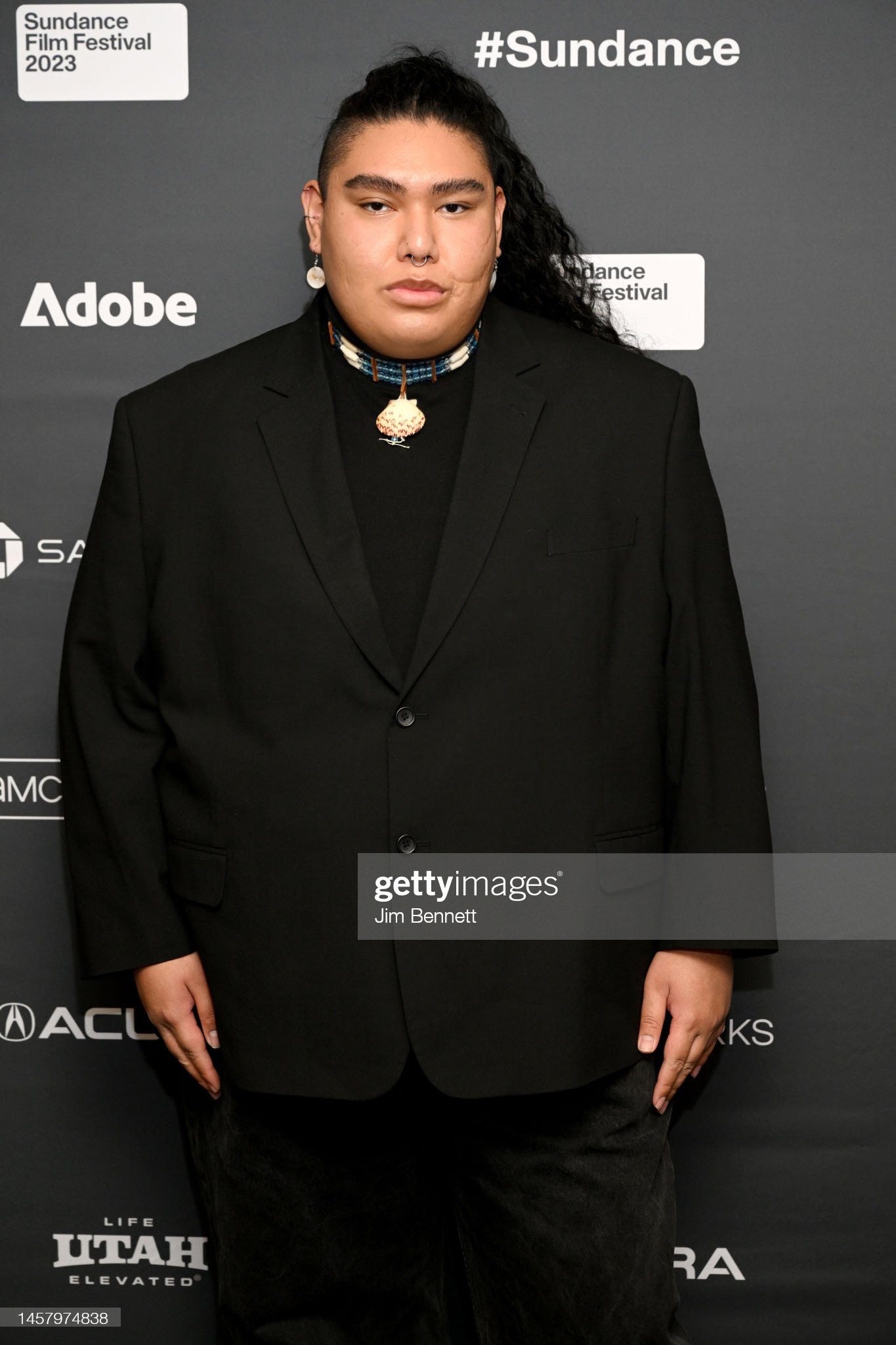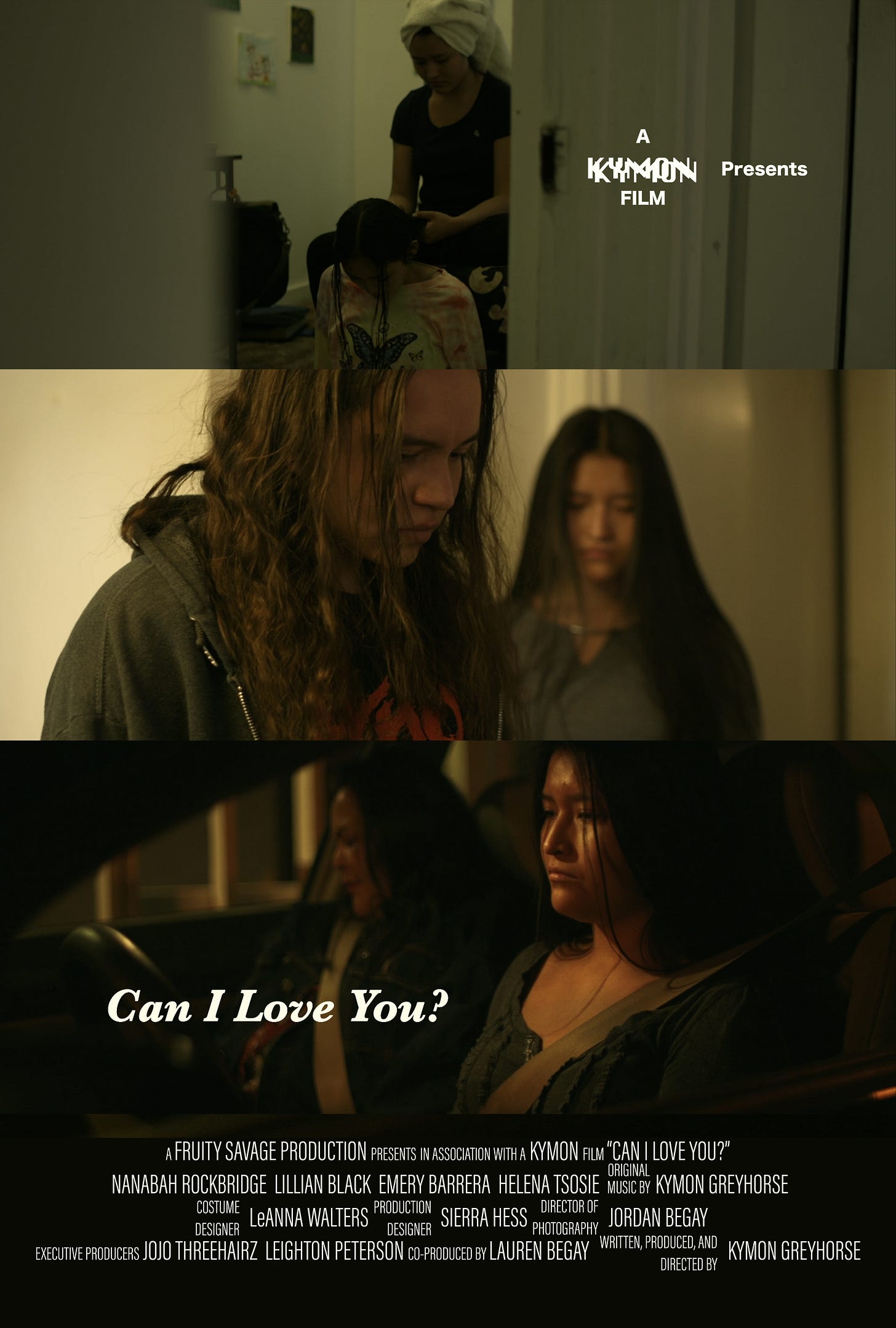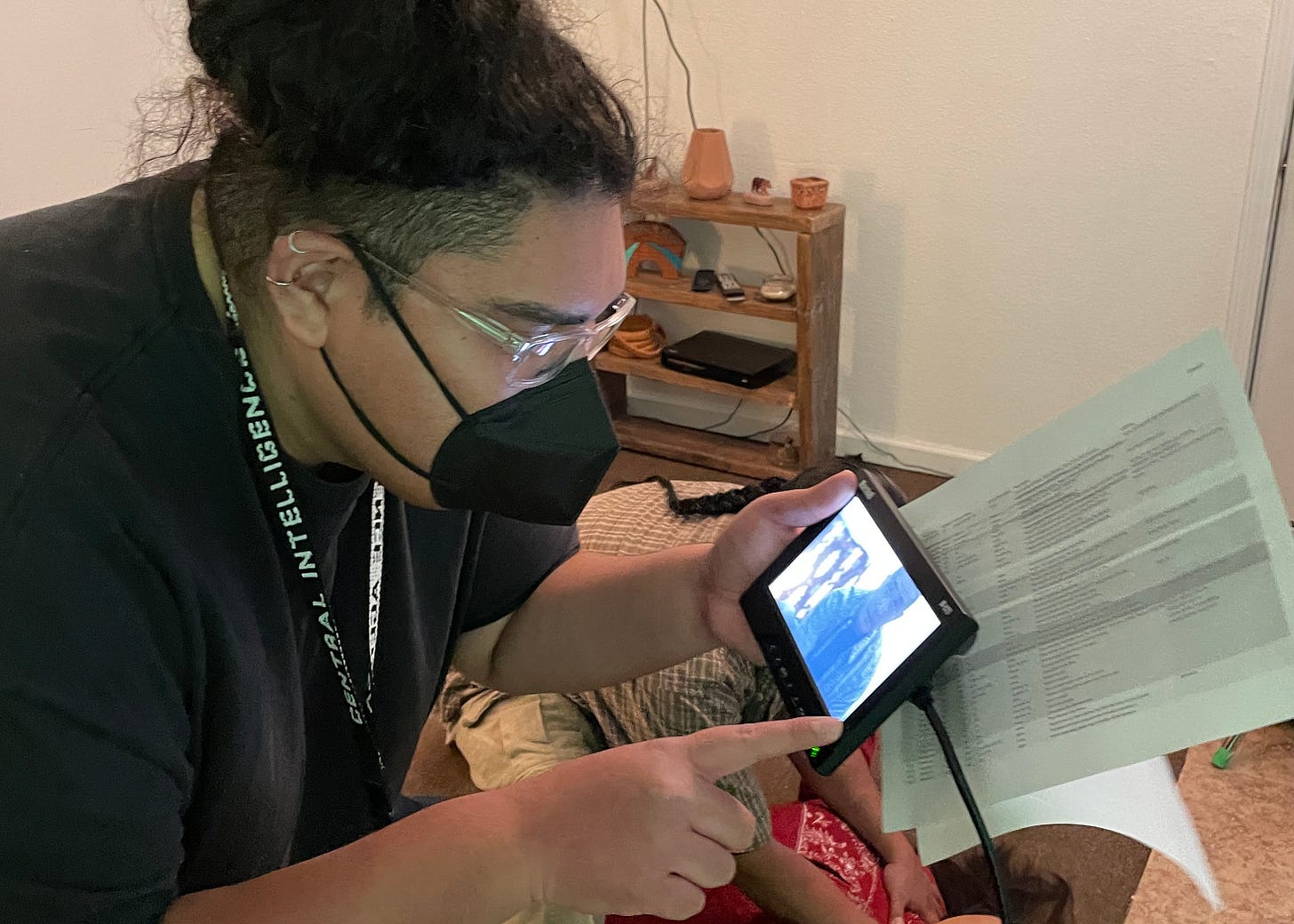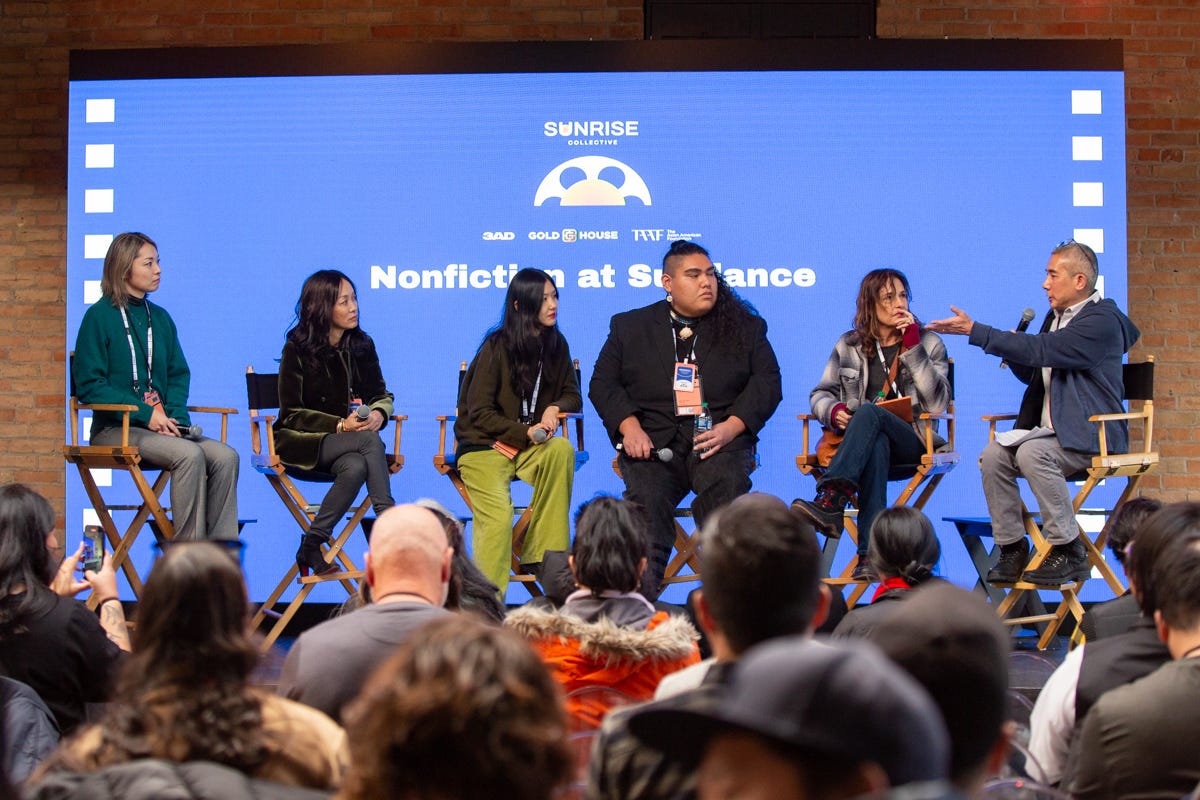Renegades, Issue 8: Kymon Greyhorse (Director, Writer)
Rising above self-doubt to bring Native and Pasifika stories to the forefront
Kymon Greyhorse
Director, Writer
Sundance Fellow
Welcome to Renegades, a series spotlighting Asian Pacific leaders and creatives who are carving their own paths and defying stereotypes along the way.
This week, we're featuring Kymon Greyhorse, director, writer, and Sundance Native Lab fellow. Kymon tells us about their path into filmmaking, the power of sharing Native and Pasifika stories, and how rising above doubt and failure paved the way for their career.
What did you want to be when you were growing up, and how does that compare to what you do today?
I think there was a moment in my early childhood where I was in limbo when family or teachers asked what I wanted to be when I grew up. I didn’t know. There was this expectation to know exactly what you wanted to do, otherwise you were looked down upon. All I knew was that I loved watching movies and mimicking what I saw on screen. At the age of 7, my favorite thing to do was click “top menu” on all my favorite films and watch the behind the scenes. When I saw all the people it took to create these iconic scenes, I told my Mom, this is what I want to do.
My mom bought me my first brick Verizon phone that had pause and resume capabilities. I gathered my cousins, and we would make our own horror and action films in my grandma’s basement and backyard. I had to edit in-camera because I had no idea what “editing” was at that age. I recorded from one angle, clicked pause, and resumed the action from a different angle, so that it still flowed once played all together. Once we finished our short video, my favorite thing was to gather the family and watch their reactions. I’m lucky and fortunate to be able to do what I love as a career.
Your film career started when you applied for the Sundance Native Lab Fellowship. What was the most memorable moment from being a fellow?
It’s insane that I was selected to be a fellow right after graduating college because everything was so new to me, and none of it felt real. I was almost intimidated by the fact that this was my first baby step into film, and [it] was a sign from the Universe that I [was] on the right path. The fellowship was a hybrid at the time due to the pandemic—we spent one week virtual and one week in-person in Santa Fe, NM. The most memorable moment for me, aside from seeing all these incredible Native and Polynesian artists, was learning from each other that we truly are our characters and stories. One of the mentors, Joan Tewkesbury, held a workshop about diving deep into ourselves and analyzing everything and everyone that made us who we are today because this is where your story begins. This has impacted my work immensely, and I will never forget that moment.
For your directorial debut, Can I Love You?, your family contributed to the writing process. How did that come about?
I am the second in my family to pursue higher education, and the months leading up to graduation I could only think of how my mom became the first. She grew up on the Navajo reservation and was the backbone of the family, the responsible one that grew up too fast. She had dreams she thought might’ve been too big. Ones that seemed too good to be true. This is what inspired “Can I Love You?” I developed the script with the belief that her story was universal and would inspire many in similar situations. My family and I spent several months over Zoom, phone calls, and texts figuring out the timeline of when my mom left for college. I was ignorant for not realizing the trauma and suppressed emotions that these conversations would dig up, but I think hearing both perspectives allowed a form of closure and healing to an unspoken trauma.
Families are complicated and can be dysfunctional at times. We don’t understand why we do or say certain things—it just happens. We either live our life with regrets or no regrets. This is the experience I want to communicate. The unfortunate progression to the breaking point and what happens when our limit is reached. While this film is still melancholic, it is a story of tough love, tough skin, and sacrifice that are necessary to break the cycle. This film redefines the pursuit of the “American Dream” through a Native lens, a love letter to my mom.
What were some of the biggest challenges you faced during the production of Can I Love You? And what are you taking away from those challenges for your subsequent films?
This was my very first narrative project and was the largest-scale project I had done at the time. It was 16 pages of script that needed to be shot in 3 days. Because it was my thesis film, I put a lot of pressure on myself and battled with self-doubt. Unfortunately, days leading up to production, it was the cherry on top to have several team members drop at the last second, one of them being my assistant director. At this point, I felt defeated and wanted to give up. I scheduled a cold read with my all-Indigenous cast the following day and planned on breaking the bad news to them.
However, during the session, they all shared how important and relatable this story was for them and spoke about how they have never seen Native stories told in such a raw way. I knew I couldn't let them down and had to piece myself back together.
After we wrapped in March 2022, I really spent some time reflecting on all that I’ve learned in such a short amount of time. One big takeaway that I will always carry with me is that you cannot let others' doubts stop you from believing in yourself. Sometimes you have to be your own cheerleader and push through the noise.
How did your upbringing, surrounded by movies and your love for stylistic genres like horror and thrillers, influence your filmmaking style and approach to storytelling?
My dad introduced me to martial arts movies and Japanese horror when I was a kid. Everything in the frame grabbed my attention and maintained that attention for 90 minutes. From the editing to the colors of the film, I was in awe. My auntie and uncle introduced me to the gory stylistic violence of Tarantino and pulpy movies along with classic American horror. [They] all had something to say and weren’t afraid to take it there. And my mom only allowed me to watch Disney and Nickelodeon, haha! I had the privilege to be exposed to so many genres of films that taught me editing, pacing, and what moments should be exaggerated and held on to build suspense. I never want to bore an audience. My goal is always to have their attention and take them on a cool journey.
Your short film, I AM HOME, was chosen for this year’s Sundance. What were some of your favorite moments from your first Sundance Film Festival?
Honestly, I had to pinch myself a lot while I was there because it didn’t feel real. I was blessed to be busy with panels, screenings, and interviews. I almost couldn’t bask in the reality that I was a part of the festival. I kept telling my friends, from the Sundance 2022 Indigenous Program cohort, that “I'm sure it’ll hit me when I return home,” and it did. I looked back and realized this is it. This is something on my bucket list, a career goal that has been achieved, so early in my career—this doesn’t just happen to anyone.
A favorite moment for me was my panel at the AAPI House. I had the opportunity to be vulnerable and share my story. I took that chance and was met after with so many people feeling the same way. Some of my Pasifika people came up to me with tears in their eyes, so excited and proud to see someone who looked like them taking up space. I felt that love. I’ll always remember what that felt like. Shoutout to Krit at Peak Pasifika, Gold House, Sunrise Collective, The Asian American Foundation, and CAPE for giving me that unforgettable experience.
What do you hope audiences take away from I AM HOME?
I want the audience to feel the love, inspiration, growth, and empowerment that went into this film. This film wasn’t supposed to run the festival circuit. I didn't create it with that in mind. It was just for me, something that I can look at and be reminded of why I am doing this. It’s an honor to share this story and hear the impact it has and what resonates and inspires. I’m so grateful for this power cinema has on all of us. I hope that message comes across to audiences.
What’s one piece of advice you would give to aspiring filmmakers?
Something I wish I learned at an early age is that it’s okay to fail. Failure is how you learn, but it’s never somewhere you want to dwell longer than you need to. And don’t wait for people to validate you or what you have to say. Continue on, fearlessly.
What are you currently working on that you’re most looking forward to?
I’m so lucky I AM HOME is having its moment on the festival circuit. It's very light-hearted and inspirational and is introducing me to so many talented people from all over. Although I love that my work can be seen as light-hearted and inspirational, I want to show the other side of me. I want to showcase my version of horror/mystery and bring a Native/Pasifika nuanced lens of revenge and action films to the forefront. I am working on a proof of concept for a short film that’s exploring my Tongan roots – following a girl who, after being away from her father for 11 years, finds out he’s been murdered. A journey of resentment, regret, and rekindling old relationships. Get excited! You can follow me on IG: @kymongreyhorse.
Lightning Round
Hometown
Salt Lake City, UT & Albuquerque, NMMost Used Emoji
🫶🏽Daily Habit
Mental health walks!Favorite Genre of Film
MysteryMost Influential Person in Your Life
My mother – without her I am nothing









What a great interview!! We need more people like Kymon Greyhorse telling Native and Pacifica stories! Keep up the good work Kymon!! ❤️🥰👏